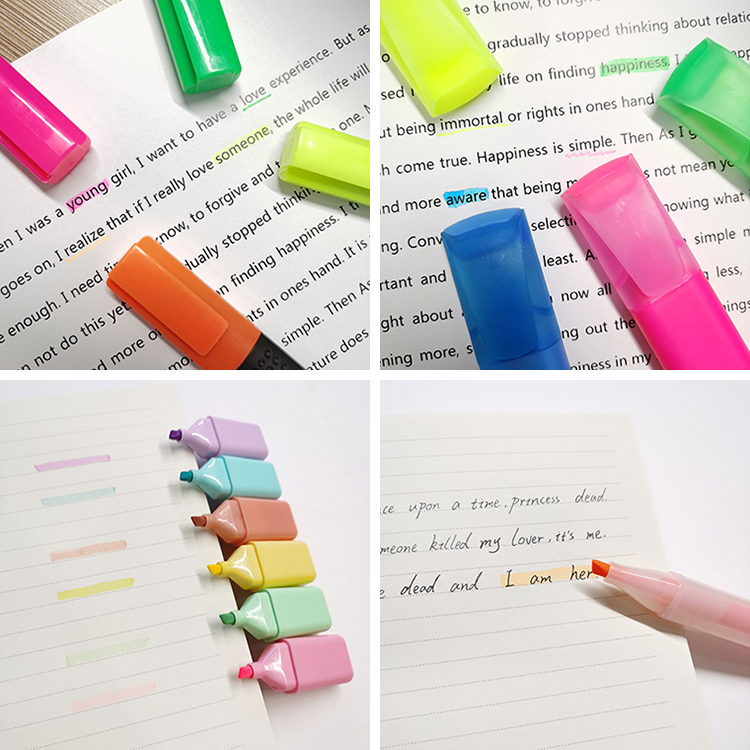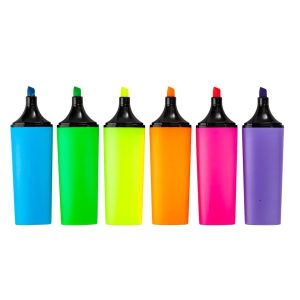A Comprehensive Guide to Highlighters
1. Anatomy of a Highlighter:
A highlighter typically consists of four main components:
Barrel: The outer casing of the highlighter, usually made of plastic, which houses the ink reservoir.
Ink Reservoir: A sponge or felt-like material that holds the highlighter ink.
Chisel or Bullet Tip: The writing tip of the highlighter, which determines the line thickness and style of highlighting.
Cap: The removable cover that protects the tip and prevents the ink from drying out.
2. Types of Highlighters:
Highlighters come in various types, each designed for specific purposes:
Standard Highlighters: These are the most common type, featuring bright and fluorescent colors suitable for general highlighting and note-taking.
Pastel Highlighters: These offer a softer, subtler color palette, ideal for a more understated approach.
Gel Highlighters: Gel-based highlighters have a smoother application, reducing the risk of smudging and bleeding through thin paper.
Dual-Tip Highlighters: Equipped with both a chisel and a fine tip, these highlighters provide versatility for different highlighting styles and precision needs.
Erasable Highlighters: These highlighters allow for the removal of highlighted text, making them suitable for temporary highlighting or editing purposes.
3. Choosing the Right Color:
Selecting the appropriate highlighter color depends on the purpose of your highlighting:
Yellow: Universally used for highlighting important text.
Orange and Pink: Ideal for emphasizing critical information or for color-coding purposes.
Green and Blue: Suitable for indicating additional notes or comments.
4. Effective Highlighting Techniques:
To maximize the utility of highlighters, consider these best practices:
Prioritize: Highlight only the most crucial information to avoid cluttering your notes.
Use Consistency: Establish a consistent system for color-coding and highlighting rules.
Avoid Overdoing It: Excessive highlighting can diminish the value of your notes; use restraint.
Review and Reflect: After highlighting, review your notes to ensure clarity and understanding.
5. Highlighter Maintenance:
To extend the lifespan of your highlighters:
Cap Securely: Always cap the highlighter when not in use to prevent drying.
Store Horizontally: Storing highlighters horizontally helps distribute ink evenly.
Replace Worn Tips: If the tip becomes frayed or worn, consider replacing it for neater highlighting.
6. Environmental Considerations:
Many highlighter manufacturers now offer eco-friendly options with refillable ink cartridges or biodegradable components. Consider these sustainable choices to reduce your environmental footprint.
In conclusion, highlighters are versatile tools that can significantly enhance your note-taking and studying processes when used effectively. By understanding their anatomy, choosing the right type and color, employing best practices, and considering environmental impacts, you can make the most of these indispensable writing instruments in your professional and academic pursuits.
















